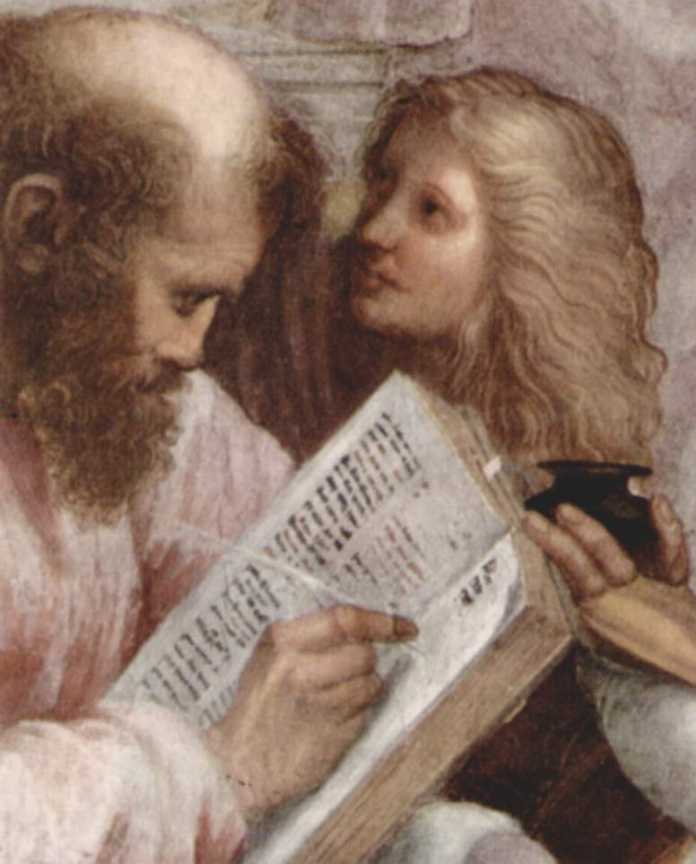Numbers, please! 1270 Female pioneers of mathematics
Against all odds, women with attitude shaped mathematics, and all too often they were not properly appreciated for it. A look at history.

(Hier finden Sie die deutsche Version des Beitrags)
The figure in our little history of women mathematicians in the run-up to International Women's Day refers to statistics from the Women in Math Project. According to the University of Oregon, at least 1270 women mathematicians have made important contributions to the development of mathematics, often without the fame that their male counterparts brought in.
Until the 1950s, many of them were only able to research and teach under great resistance. This can be seen in the example of the German scientist Ruth Moufang, who had to work in industry under the National Socialists because they denied her a teaching position due to her gender. It was not until 1957 that she was able to teach in Frankfurt am Main, the first full professor of mathematics. Even better known is the fate of Emmy Noether, probably Germany's greatest mathematician, who had to stand her ground in science against multiple odds and flee from the Nazis. But there are even earlier examples.
Theano continued the school of her husband Pythagoras
Already in ancient Greece, Theano made a name for herself. As the wife of Pythagoras, she continued his school after his death. Together with Pythagoras, she is credited with the discovery of the golden mean and the golden rectangle. However, her main work "The Life of Pythagoras" is lost. The sources for the Alexandrian mathematician Hypatia, who was born around 370 AD and cruelly murdered by fanatical Christians in March 415, are somewhat better.
None of her writings, a commentary on the work of Diophantos of Alexandria and a writing on the conic sections of Appolonius of Perge, has survived either. For her most famous sentence "Defend your right to think" there is no secure evidence. However, there is evidence that she, together with her father, the mathematician Theon of Alexandria, presented a new version of Euclid's Elements, from which all variants known today are derived.
One who tenaciously defended her right to think was Elena Cornaro Piscopia (1646-1685). Born out of wedlock, the daughter of a Venetian nobleman, she received an extensive education in eight languages and played eight instruments. Her father, presenting her as a child prodigy, sent her to study at the University of Padua. There, at his insistence, she was to earn a doctorate in theology, which was refused by the church because it was coupled with a church teaching license. Women, however, had to remain silent in the church, the theologians thought. In 1678, with a disputation on Aristotle's Analytica posteriora, she became the first female doctor of philosophy. The crowd for the public disputation was so great that it was necessary to move to the Cathedral of Padua. Now a woman was speaking in the church after all. After Margaret Alic, Piscopia worked as a lecturer in mathematics in Padua.
Pioneering female mathematicians of the 18th century
In France, Émilie du Châtelet (1706-1749), who lived in a wealthy household, was a woman who acquired mathematical knowledge through renowned tutors. She lived with Voltaire from 1734. Her translation of Newton's "Principia mathematica" from Latin remains the authoritative French translation to this day. Maria Gaetana Agnesi (1718-1799) of Milan was a mathematician who was raised as a child prodigy by her father, a silk merchant, but broke away from her father by studying mathematics on her own. Her book "Instituzioni analitiche ad uso della gioventù italiana", published in 1748, is the first mathematics work written by a woman. A curve she discussed is named after her, the Versiera of Agnesi. The English translator of the book, however, read "avversiera" and translated the term as witch (= woman against God), with which the English-speaking guild speaks of the Witch of Agnesi. This does not do her justice, because with the death of her father her occupation with mathematics ended and she ran a hospital for the poor, where she later died. She did not accept the professorship of mathematics at the University of Bologna, which the Pope had offered her in 1750.
Women who shaped and are shaping mathematics and IT (10 Bilder)

Sophie Germain (1776-1831) was also the daughter of a well-heeled silk merchant. Germain received her mathematical education initially through tutors and worked her way through the works of Newton and Euler. After the founding of the École polytechnique in Paris in 1794, she enrolled as a student under the pseudonym Antoine Auguste Le Blanc and studied under Joseph Louis Lagrange. Under the pseudonym, she began a correspondence with Gauss on his work "Disquisitiones arithmeticae" and turned to number theory. Starting in 1808, she conducted research in the field of elasticity theory, for which she was awarded the prize of the Institut de France (Académie des sciences) in 1815. Despite the outstanding importance her theory had in the construction of the Eiffel Tower, her name is not found on the engraving plate of the engineers and scientists who participated in its construction. In mathematics, she is known for her contributions to Fermat's theorem and honored with the Sophie Germain prime.
Great female mathematicians with (almost) identical names
When Florence Nightingale (1820-1910) is mentioned, people like to think of her as a nurse, but she received private mathematical instruction from James Joseph Sylvester, who called her his most gifted student.
Nightingale developed the polar area diagram through her research on disease and mortality as a statistician during the Crimean War. To make the name confusion complete, another important statistician named Florence Nightingale David lived from 1909 to 1993, and a prize is named after her that is awarded to female statisticians who are considered role models for work by female statisticians in research.
The career of British mathematician Charlotte Angas Scott (1858-1931) began with quarrels over an award. After a mathematical education at Girton College for Young Women, she was exceptionally admitted to the mathematical Tripos exam at Cambridge University in 1880 and was the eighth best. With the top ten proclaimed "wrangler" at a ceremony, her name was simply passed over. Fellow students protested loudly. Scott, meanwhile, who was not present at the ceremony, was celebrating at Girton College. There she taught as a mathematics lecturer and in 1885 became the first woman to earn a mathematics doctorate - from the University of London. At Cambridge, women were not allowed to earn doctorates until after 1948.
This brings us to the German mathematician Emmy Noether (1882-1935). As the daughter of the Erlangen mathematician Max Noether, she was able to pass the Abitur in 1903 via detours (attending a Gymnasium was forbidden in Bavaria) and study mathematics. In 1907 she received her doctorate with a thesis on invariant theory; she supervised doctoral students there, but did not receive a paid position.In 1915 she was invited by Felix Klein and David Hilbert to Göttingen, then the world center of mathematics. Among the aforementioned quarrels about her habilitation was David Hilbert's indignant remark that a faculty was not a bathing establishment after all - where men and women had to bathe separately at the time. Noether failed in the same year because of the ban on habilitation for women, and even after 1919, when she became the first German to habilitate in mathematics, she had to accept a low-paid teaching position that had to be approved every semester. She had to flee to the USA as a Jew when the Nazis came to power in 1933 and died two years later from an unsuccessful operation. Today she is considered a co-founder of modern algebra.
In the sensitive comic Noethember, drawn by the Chilean mathematician Constanza Rojas-Molina, one can follow the eventful life of Emmy Noether. The fact that she had to emigrate to the USA as a Jew was a fate that befell many mathematicians who did not fit into the terrible "German mathematics" of the National Socialists.
Mention should be made of Herta Taussig Freitag (1908-2000) and Hilda Geiringer von Mises (1893-1973), who asserted themselves under the most difficult circumstances and survived. In this context, we must also mention the mathematician Johanna Weber (1910-2014), who refused to join the NSDAP and therefore had to switch to industry. Initially, she worked at the aerodynamic research institute in Göttingen. Eventually, she ended up in Great Britain, where she helped design the Concorde supersonic passenger aircraft.
Groundbreaking female IT pioneers
Women mathematicians also played an important role in the development of computer science and computer technology. Here, there are well-known names that outshine everything and are widely acknowledged, such as Ada Lady Lovelace (1815-1852), who described a universal computer in her "Translator's Notes" in 1843 and raved that the Analytical Engine devised by Charles Babbage weaves algebraic patterns like the Jacquard loom weaves flowers and patterns.
From her, the path leads to the mathematician Ada Dietz (1882-1950), who visualized algebraic expressions with the loom, but also to the mathematician Mary Everest Boole (1832-1916), who was not allowed to teach as a mathematician and taught as a librarian. Her visualizations of mathematical models founded modern string geometry, while her husband developed Boolean algebra, which as a circuit algebra governs computer computation.
Also well-known is the work of Grace Hopper (1906-1992), whose career began with a mathematical dissertation (PDF file). Far less well known is the prominent role played by Mina Rees (1902-1997) as head of the Mathematics Division of the Office of Naval Research (ONR) during World War II. She coordinated virtually all mathematical research in the U.S. through the Applied Mathematics Panel, because her nominal boss Warren Weaver already had work enough as head of the Rockefeller Foundations.
The role of mathematician Betty Shannon (1922-2017) is also relatively unknown. She not only gave her husband Claude Shannon the Erector set, which he used to construct the Theseus mechanical mouse, but also wired it. The Shannons' "joint project" consisted of Betty noting down Claude's ideas and adding to them mathematically. Many manuscripts bore her handwriting.
From planned prodigy to IT expert
His daughter was just two days old when Aaron Stern, a concentration camp survivor, introduced the Edith Project, the systematic education of a daughter into a prodigy, to the U.S. press in 1952. He published a book about it, The Making of a Genius, which conceals the fact that the highly talented mathematician Edith Stern stuffed her grief inside herself until her physical lifestyle was rejected by her parents. After that, however, she launched a remarkable career at IBM, which was rewarded with the Kate Gleason Award. She also holds 120 patents.
In addition to the unrecognized female heroes who shaped the history of technology at NASA and elsewhere, we should mention the mathematician Anne Easley (1933-2011), who worked at NACA, later known as NASA, for 34 years starting in 1955. There, as a woman and an African American, she had to fight for recognition for a long time. In addition to her work on the Centaur program, she became NASA's first Equal Employment Opportunity counselor and researched the use of renewable energy sources such as wind power and solar energy that must take us into the future. So what's happening in math?
What's coming up today features perhaps the most gifted exponent of category theory, Emily Riehl. A mathematics professor at Johns Hopkins University, she succeeded as a football player and bassist in a queer band. Along with many other mathematicians (PDF file), she is one of the founders of the LBGTQ+ organization Spectra. Mathematics is for everyone.
(mawi)